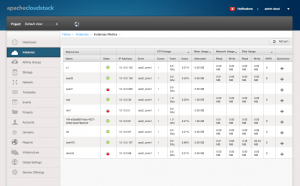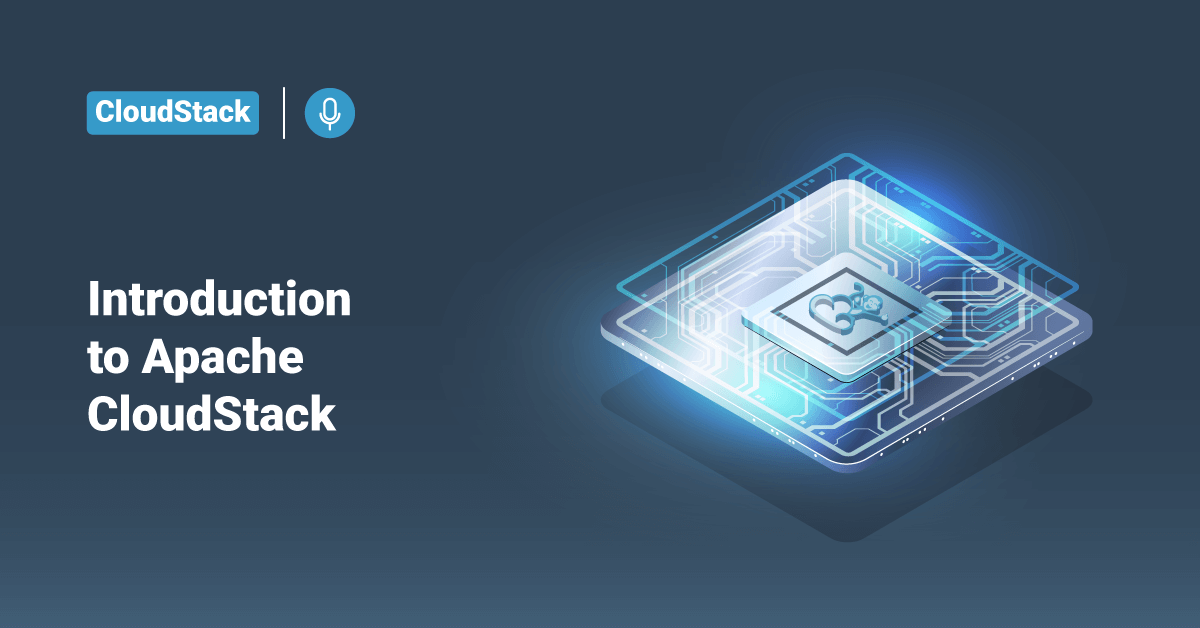Apache CloudStack is a free and open-source Infrastructure as a Service (IaaS) platform that orchestrates and manages pools of a network, storage, and other computer resources to build a private or public IaaS compute cloud. Apache CloudStack allows any IT service provider to offer public cloud services to their customers. It can also be used by companies who wish to offer hybrid and private cloud services to their users.
Apache CloudStack has a computer function that assigns virtual machines (VMs) to an individual server. This virtual machine controls the switches that help manage and create block storage systems, logical networks, and a cloud computing management interface. The cloud computing management interface offered by CloudStack can support all of the software components. Apache CloudStack also allows administrators to manage and release large 0networks of virtual machines that can run many hypervisors. With the help of Apache CloudStack, users can:
- Allow end-users to provision resources
- Set up an on-demand elastic cloud computing service.
Customers can manage their cloud with an easy to use Web interface, a full-featured RESTful API, or command-line tools. In addition, Apache CloudStack offers an API that is compatible with both Amazon Simple Storage Service (S3) and AWS Elastic Cloud Compute (EC2) for organizations that want to deploy hybrid clouds.
Customers can manage their cloud applications with an easy to use Web interface, a full-featured RESTful API, or command-line tools. In addition, Apache CloudStack offers an API that is compatible with both Amazon Simple Storage Service (S3) and AWS Elastic Compute Cloud (EC2) for organizations that want to deploy hybrid clouds.
Features offered by Apache CloudStack
Some of the key features offered by Apache CloudStack are:
Multiple Hypervisor Support:
Apache CloudStack can run a variety of hypervisor and hypervisor-like technologies. A single cloud can run multiple hypervisor implementations. As of the latest release, Apache CloudStack supports:
- BareMetal (via IPMI),
- KVM,
- Hyper-V,
- vSphere (via vCenter),
- LXC,
- Xen Project, and
- Xenserver.
Automatic Cloud Configuration Management:
Apache CloudStack configures the storage and network settings for each virtual machine deployment automatically. Internally, the operations of CloudStack are supported by a pool of virtual appliances. These virtual appliances offer different services, such as routing, fire-walling, VPN, console proxy, DHCP, storage access, and storage replication. The extensive use of horizontally scalable virtual machines simplifies the ongoing and installation operation of the cloud.
Scalable Infrastructure Management
Apache CloudStack can manage more than ten thousand physical servers installed in geographically distributed data centers. The management servers offered by CloudStack can scale near-linearly, eliminating the need to choose cluster-level management servers. Maintenance or other outages of the management server can occur without affecting the virtual machines running in the cloud.
Graphical User Interface
Apache CloudStack offers an administrator’s web interface for managing and provisioning the cloud and an end-user’s Web interface for running Virtual Machines and managing VM templates. Customers can customize the User Interface to reflect the desired service provider or enterprise look and feel.

API Support
Apache CloudStack offers a REST-like API for the use, management, and operation of the cloud. Also, Apache CloudStack provides an Elastic Compute Cloud API translation layer to permit the standard EC2 tools to be used in a CloudStack cloud.
High Availability
CloudStack offers several features to increase the availability of the system. The Management Server can be deployed in a multi-node installation, where the servers act as the load balancer. In CloudStack, customers can configure MySQL to use as replication in the event of database loss or failover. Apache CloudStack supports NIC bonding, iSCSI Multipath, and the use of separate networks for storage for the hosts.
Difference Between OpenStack and CloudStack
Some of the Key differences between OpenStack and CloudStack are:
Ease of Use:
OpenStack has improved and become more accessible to deploy over the years, whereas CloudStack has been relatively simple for the past two years. The initial deployment of OpenStack has not changed much as compared to OpenStack.
CloudStack is more comfortable for day-to-day use. It also offers unique features such as admins to create security zones across regions and storage independent computers, making them perfect for day-to-day use and resource availability. CloudStack is ideal for massive scalability and centralized management. CloudStack allows for effective management of multiple servers all over the globe from a single portal. CloudStack is considerably more user-friendly than OpenStack.
On the other hand, OpenStack is not as user-friendly as CloudStack. OpenStack faces difficulty because architecture and installation procedures still need a lot of time to distribute. Installation sometimes requires additional knowledge before users can adequately utilize it. Since CloudStack is relatively new compared to OpenStack, it lacks a huge community base and isn’t backed by the market. CloudStack is a new and refined product with heavy user adoption, so this may change in the future.
Feature Sets:
If we consider core feature sets, both OpenStack and CloudStack are incredibly similar. CloudStack works very well in network and computing orchestration, whereas OpenStack offers some Platform as a Service features.
Conclusion
This tutorial presents the purpose and features offered by CloudStack. Hopefully, the tutorial can help businesses and developers to decide about choosing Apache CloudStack.









